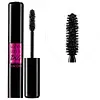What's inside
What's inside
 Key Ingredients
Key Ingredients

No key ingredients
 Benefits
Benefits

 Concerns
Concerns

 Ingredients Side-by-side
Ingredients Side-by-side

Water
Skin ConditioningParaffin
PerfumingPotassium Cetyl Phosphate
EmulsifyingCopernicia Cerifera Cera
EmollientEthylene/Acrylic Acid Copolymer
Emulsion StabilisingStyrene/Acrylates/Ammonium Methacrylate Copolymer
Cera Alba
EmollientSynthetic Beeswax
Emulsion StabilisingBis-Diglyceryl Polyacyladipate-2
EmollientPolybutene
Cetyl Alcohol
EmollientSteareth-20
CleansingGlyceryl Dibehenate
EmollientSteareth-2
EmulsifyingC12-13 Pareth-23
CleansingC12-13 Pareth-3
EmulsifyingTribehenin
EmollientAcacia Senegal Gum
MaskingGlyceryl Behenate
EmollientSodium Laureth Sulfate
CleansingSilica
AbrasiveDivinyldimethicone/Dimethicone Copolymer
Disodium EDTA
Hydrogenated Jojoba Oil
AbrasiveHydrogenated Palm Oil
EmollientHydroxyethylcellulose
Emulsion StabilisingCaprylyl Glycol
EmollientTetrasodium EDTA
Ethylenediamine/Stearyl Dimer Dilinoleate Copolymer
Skin ConditioningButylene Glycol
HumectantBHT
AntioxidantPentaerythrityl Tetra-Di-T-Butyl Hydroxyhydrocinnamate
AntioxidantPotassium Sorbate
PreservativeSodium Dehydroacetate
PreservativePhenoxyethanol
PreservativeWater, Paraffin, Potassium Cetyl Phosphate, Copernicia Cerifera Cera, Ethylene/Acrylic Acid Copolymer, Styrene/Acrylates/Ammonium Methacrylate Copolymer, Cera Alba, Synthetic Beeswax, Bis-Diglyceryl Polyacyladipate-2, Polybutene, Cetyl Alcohol, Steareth-20, Glyceryl Dibehenate, Steareth-2, C12-13 Pareth-23, C12-13 Pareth-3, Tribehenin, Acacia Senegal Gum, Glyceryl Behenate, Sodium Laureth Sulfate, Silica, Divinyldimethicone/Dimethicone Copolymer, Disodium EDTA, Hydrogenated Jojoba Oil, Hydrogenated Palm Oil, Hydroxyethylcellulose, Caprylyl Glycol, Tetrasodium EDTA, Ethylenediamine/Stearyl Dimer Dilinoleate Copolymer, Butylene Glycol, BHT, Pentaerythrityl Tetra-Di-T-Butyl Hydroxyhydrocinnamate, Potassium Sorbate, Sodium Dehydroacetate, Phenoxyethanol
Water
Skin ConditioningCera Alba
EmollientButyrospermum Parkii Butter
Skin ConditioningPolyglyceryl-6 Distearate
EmulsifyingDimer Dilinoleyl Dimer Dilinoleate
EmollientCopernicia Cerifera Wax
Glycerin
HumectantPolyglyceryl-10 Myristate
Skin ConditioningCetyl Alcohol
EmollientGlyceryl Caprylate
EmollientLeuconostoc/Radish Root Ferment Filtrate
AntimicrobialZea Mays Starch
AbsorbentXanthan Gum
EmulsifyingArginine
MaskingPhenethyl Alcohol
MaskingHydrolyzed Rhodophyceae Extract
Phenoxyethanol
PreservativeCI 77499
Cosmetic ColorantWater, Cera Alba, Butyrospermum Parkii Butter, Polyglyceryl-6 Distearate, Dimer Dilinoleyl Dimer Dilinoleate, Copernicia Cerifera Wax, Glycerin, Polyglyceryl-10 Myristate, Cetyl Alcohol, Glyceryl Caprylate, Leuconostoc/Radish Root Ferment Filtrate, Zea Mays Starch, Xanthan Gum, Arginine, Phenethyl Alcohol, Hydrolyzed Rhodophyceae Extract, Phenoxyethanol, CI 77499
Ingredients Explained
These ingredients are found in both products.
Ingredients higher up in an ingredient list are typically present in a larger amount.
Cera alba is beeswax, or the wax used by bees to make honeycombs. It is a texture-enhancer and emollient. A study from 2003 found beeswax to be a stronger emollient than ingredients such as petroleum jelly.
As an emollient, beeswax helps hydrate the skin by creating a barrier on top. This barrier traps moisture in.
Emulsifiers help prevent ingredients from separating. This helps create consistent texture.
The structure of beeswax is mainly long-chain alcohols and the esters of fatty acids.
There are three types of beeswax: yellow, white, and absolute. Yellow is pure beeswax taken from the honeycomb. White beeswax is created by filtering or bleaching yellow beeswax. Absolute beeswax is created by treating beeswax with alcohol. Beeswax used in cosmetics are purified.
Beeswax has been used throughout history and even in prehistoric times. Some common uses for beeswax still used today are making candles, as a waterproofing agent, and polish for leather.
Learn more about Cera AlbaCetyl Alcohol is a fatty alcohol. Fatty Alcohols are most often used as an emollient or to thicken a product.
Its main roles are:
Though it has "alcohol" in the name, it is not related to denatured alcohol or ethyl alcohol.
The FDA allows products labeled "alcohol-free" to have fatty alcohols.
Learn more about Cetyl AlcoholPhenoxyethanol is a preservative that has germicide, antimicrobial, and aromatic properties. Studies show that phenoxyethanol can prevent microbial growth. By itself, it has a scent that is similar to that of a rose.
It's often used in formulations along with Caprylyl Glycol to preserve the shelf life of products.
Water. It's the most common cosmetic ingredient of all. You'll usually see it at the top of ingredient lists, meaning that it makes up the largest part of the product.
So why is it so popular? Water most often acts as a solvent - this means that it helps dissolve other ingredients into the formulation.
You'll also recognize water as that liquid we all need to stay alive. If you see this, drink a glass of water. Stay hydrated!
Learn more about Water